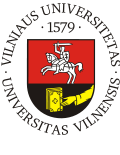Global grant
The project "Investigation of ultrafast photoelectrical processes in materials for organic electronics by optical techniques" is funded by the European Social Fund under the Global Grant measure
Project Summary
The project aims to understand ultrafast electronic processes governing charge carrier and exciton dynamics in organic optoelectronic materials and to learn to control them by chemical engineering and sample preparation in order to optimize the materials properties for optoelectronic devices. It will focus predominantly on photogeneration of geminate charge pairs, their separation as well as initial diffusional motion and drift in the electric field. Exciton formation, transformations, relaxation and diffusion phenomena will be also investigated because exciton and charge dynamics are interrelated and both are governed by similar electronic processes. These processes in organic materials are very fast, therefore ultrafast optical and optoelectronic methods will be used for their investigation. Experimental studies will be combined with theoretical investigations of electronic structure and dynamics by means of quantum chemistry methods, and numerical Monte Carlo simulations.
The main novelty of the project will be that we will monitor optoelectrical processes by means of optical methods with ultimate time resolution. We will follow the dynamics of charge carriers during their photogeneration, immediately after photogeneration and during their localization in traps. This regime is not accessible by conventional measurements of microscopic charge mobility, which is limited by field-assisted charge carrier activation from the traps. Namely these processes take place in solar cells and determine their performance. They are also important in organic light-emitting diodes and other thin film devices. Because of the experimental difficulties, they are still weakly investigated. We will investigate basic mechanisms of the ultrafast transformations and relaxation as well as their dependence on chemical and morphological structure of materials. Electric field modulated transient absorption and luminescence methods, experimental techniques of the initial charge carrier motion investigation based on electric field measurements by means of the dynamic Stark effect and optical second harmonic generation developed in our laboratory will help us to overcome difficulties of their experimental investigation.
There is justified hope that organic optoelectronics will lead to break-through in photonics technologies. The optimism is based on the resent achievements in organic optoelectronics, such as demonstration of the while organic light emitting diode with the operation efficiency exceeding that of the fluorescent lamp [Reineke et al., Nature 459, 234, 2009], polymer solar cell with 7% yield [Liang et al., Adv.Mater. 22, 2010, online] or first commercial displays based on organic materials. Organic electronics can significantly contribute to saving and production of electricity. However, much remains to be done before these devices will become really commercially competitive. First of all, their operation efficiency shall be significantly increased. This requires optimisation of their performance, which cannot be done without full understanding of processes taking places in these devices.
Operation of the vast majority of the organic optoelectroninc devices is based on motion and transformations of excitons and charge carriers. Charge carrier photogeneration is of particular importance for solar cells. In organic materials, it takes place in two phases: photon absorption generates a bound exciton, which moves by diffusion until it reaches a materials interface or other carrier generation centre where splits into charge carriers or decays to the ground state. Thus, in order to optimise the charge carrier generation, one needs to understand and optimise exciton motion, formation of charge transfer states and their subsequent splitting into free charge carriers. In spite of extensive research and importance, the charge carrier generation process in organic materials is not yet understood and even its basic principles are still subjects of discussions. How carriers move against mutual Coulomb force during their separation remains one of the open questions.
The carrier separation and motion determine collection efficiency of charge carriers in organic solar cells. Mobility of electrons and holes in organic light-emitting diodes must be balanced so that they shall simultaneously reach luminescent layer and recombine. This is particularly important for realization of electrically pumped polymeric lasers. One of the main obstacles to the development of these devices is a relatively slow carrier motion resulting in their high concentration and loses in light propagation due to the carrier absorption. Low carrier motion limits currents in field effect transistors and creates their speed limits. In order to increase the carrier mobility and to control it we shall learn to measure it and to understand how it depends on material chemical structure and morphology.
Project Goals
The main objective of the project is to seek for better understanding of these processes and to learn to control them in order to optimise optoelectonic devices. We will address these main issues:
- Development and implementation of new research methods and experimental facilities, for: a) exciton diffusion investigation, b) ultrafast charge carrier generation investigations based on a fluorescence quenching, transient differential absorption modulation by electric field, c) ultrafast methods for investigation of electric field and current dynamics.
- Advanced study of the charge carrier generation in conjugated polymers, their blends, molecular glasses and multifunctional molecular materials. Determination of the generation mechanism and its dependence on material structure as well as on external parameters such as electric field, temperature.
- Investigation of the dynamics of the charge carrier mobility focusing on the ultrafast initial part. Investigation of the properties of this process in materials with different structural arrangement: disordered and oriented polymers, molecular glasses, polymer and fullerene blends, ect.
- Verification of the developed models by Monte Carlo simulations and calculations of the electronic structure and energies of excitons, charge transfer states and free carrier states.


